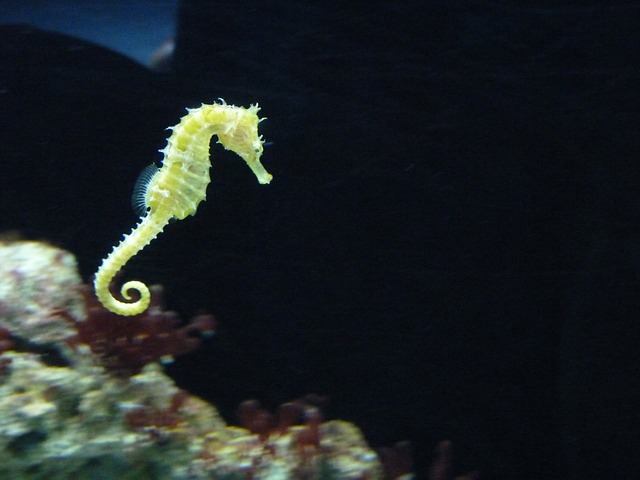Seahorse Facts
Below are some of the facts about Seahorse:
- Seahorses are marine animals. They are basically fishes with a strange body type identical to horses. That is why they are called sea horses. They fall in the genus Hippocampus. There are 45 species of sea horses in the oceans of the world.
- Seahorses have a small fin at their back which flutters fast to help them propel in water. The fins can flutter 35 times in a second. There are even smaller pectoral fins for giving them direction in water. The pectoral fins are located at the back of the head.
- Seahorses swim together and they link their tails during swimming.
- To protect themselves from predators, they mimic the colour of the underwater plants.
- The seahorse is very bony and also not easy to digest. That is why most predators avoid eating sea horses. Mostly crabs predate on them.
- As swimmers seahorses are quite clumsy. Hence they may die by being exhausted when trying to keep up with the turbulent waters in a rough sea.
- While feeding, they anchor their body to coral and sea grasses with their tails. They use their long snout to suck in and feed on small crustaceans and planktons. Seahorses can suck up their food from a distance of 3 cm.
- The sea horse can move its each eye independently. This is a feature it has to know about the sea life passing beside it as it moves. Throughout its activity during its waking period, it keeps on feeding on planktons and tiny fishes.
- The seahorse is devoid of a digestive system. It has no teeth, and no stomach to store food, and food it ingests constantly passes through its body and gets excreted. That is why it must keep on feeding consistently to get supply of energy.
- A sea horse can feed on more than 3000 brine shrimps in a day.
- The sea horse has a fixed single mate through life, and it is strictly monogamous. Very strangely, it’s the only animal on earth, where the male bears the baby until it’s born. This strange adaptation in the animal is to allow the female to stay free from pregnancy and produce more eggs so that they can give birth to more babies.
- Seahorses does courtship through an eight hours long dance, and in this process they spins around each other, changes colors, and swims alongside.
- The female seahorse lays batches of 50 eggs. The 50 eggs in a pouch are implanted into the abdomen of the male seahorse. The male then carries those eggs in his abdomen till maturity, and when the eggs hatch, the father releases the juvenile seahorses in the water. Between 5 and 1500 any number of young ones may get born.
